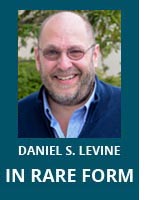 Hours after Sanath Kumar Ramesh’s son Raghav was born, doctors grew concerned that something wasn’t right. He lacked the energy to lift his hand, move his leg, or drink. After many tests, a protracted hospital stay, and a couple of misdiagnoses, he was diagnosed on his first birthday with sedaghatian type spondylometaphyseal dysplasia, an ultra-rare and progressive disorder.
Hours after Sanath Kumar Ramesh’s son Raghav was born, doctors grew concerned that something wasn’t right. He lacked the energy to lift his hand, move his leg, or drink. After many tests, a protracted hospital stay, and a couple of misdiagnoses, he was diagnosed on his first birthday with sedaghatian type spondylometaphyseal dysplasia, an ultra-rare and progressive disorder.
Sedaghatian type spondylometaphyseal dysplasia (SSMD) is caused by mutations in the GPX4 gene. There are only about nine known patients with GPX4 mutations. In the past, most known cases resulted in death about a month after birth.
Ramesh has moved with remarkable speed to find patients, raise money, and drive research. He created CureGPX4.org, but rather than wait to create a 501(c)3, he wrote a blog post and immediately began to raise money working through a friend’s foundation. In his first two days he raised $100,000, enough to convince him that he could have a positive impact on his son’s quality of life.
“I believe in speed,” he said. “I just cannot wait, primarily because my son’s condition is so rare and so fatal that we don’t know what’s going to happen tomorrow to him.”
Even though he is a software engineering manager, Ramesh began doing a deep dive in to the medical literature and identified 36 drugs and supplements that could potentially be repurposed for GPX4. He has already used some of these to treat his son, now 2, with some visible benefits. But he also sent blind emails to any researchers who had worked on GPX4 and built a scientific advisory board. Though not a lot is known about his son’s disease, GPX4 has been studied because of its potential role in cancer.
“My strategy has been to assemble a research team that spans across the whole drug development pipeline,” he said. “Rather than just focus on basic research, or translational research, or drug repurposing, or gene therapy, I wanted to assemble the entire crew so we could go into different areas with all guns blazing.”
In March, Ramesh organized a virtual research conference with more than 30 researchers. They explored a range of therapeutic approaches and concluded that the condition was an appropriate candidate for an AAV 9 gene therapy. In April, he began pursuing a gene therapy. But that effort has led to a greater mission for Ramesh than just developing a treatment for his son.
“When I started looking into gene therapy, I realized I need about $5 million or so. I could go raise the money and get a drug for my son, but five years from now, I am confident that another patient born with this disease is not going to get the drug,” he said, noting that as an ultra-rare condition it affects too few people to attract drug company involvement.
“All the work that I do, that I’m taking time away from my life, from my family, from my son, is going to benefit my son in some way, hopefully,” he said. “But then it’s not going to benefit all the other kids with this disease in the future because no company will ever be interested in taking over this condition for a commercial approval.”
His search for an answer led him to the National Institutes of Health’s National Center for Advancing Translational Sciences and its Platform Vector Gene Therapy (PaVe-GT) program. The pilot project seeks to increase the efficiency of preclinical development of gene therapies by using the same gene delivery system and manufacturing methods for multiple rare disease gene therapies. PaVe-GT will make program results and regulatory documents publicly available, with the intention of benefiting future gene therapy clinical trials for very rare diseases. The idea is that anyone using the same vector and processes can plug in a needed gene and bypass many of the preclinical requirements to advancing a gene therapy to the clinic and address a significant cost barrier.
PaVe-GT is pursuing four different genetic diseases in its pilot using the same AAV9 vector, the very vector that Ramesh hopes to use for his son. Though the program had already identified the diseases for which it was pursuing gene therapies, GXP4 could be a beneficiary when the program advances as it is intended to enable a treatment for someone like Raghav.
In the meantime, Ramesh is trying to tackle another aspect that patient organizations hoping to develop gene therapies for ultra-rare diseases face. He’s joined with several drug developers, contract research organizations, and other stakeholders to create an open-source system that can guide patient organizations through all the necessary steps for developing a gene therapy. He’s raising money now for a pilot for three diseases including GPX4. The hope is that the system could be used to walk any organization through the process of developing a gene therapy and connect them to researchers, vendors, and other resources needed throughout the process.
“Patient foundations typically spend months trying to understand what to do, and then once they understand what to do, they spend a few more months deciding if this is the right investment for their money at this point in time,” said Ramesh. “This will short circuit all of that. What used to take months will be shortened to hopefully days, if not hours, to make these decisions.”
Photo: Sanath Kumar Ramesh and family

Stay Connected
Sign up for updates straight to your inbox.
